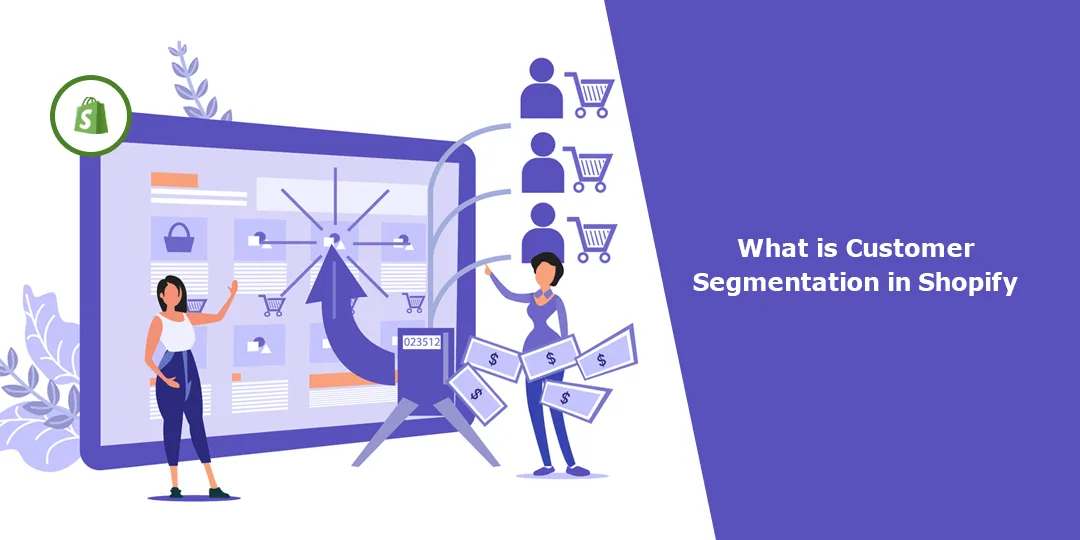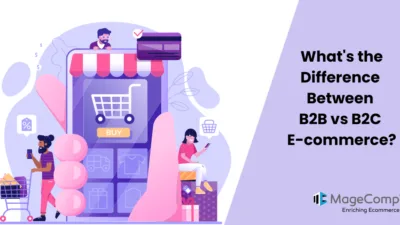Would you get frustrated receiving promotions and offers which are not of your interest from your favourite brands? Obviously, yes, anyone would get annoyed with unwanted deals and promotional messages.
To provide the right deals to the right customers and offer a personalized shopping experience to customers, store merchants need to segment their customers based on various criteria. Let’s learn more about customer segmentation for Shopify.
What is Customer Segmentation?
Customer segmentation refers to the process of categorizing customers into distinct groups based on various criteria such as their purchase history, demographics, behavior, and preferences. This practice enables Shopify merchants to gain deeper insights into their customer base, understand their needs and preferences, and deliver more personalized shopping experiences.
Why Segment Customers?
Segmenting customers is crucial for several reasons, as it allows businesses to understand and cater to the diverse needs and preferences of different customer groups. Here are some key reasons why businesses segment their customers:
- Customer segmentation enables businesses to personalize their marketing efforts, product offerings, and customer interactions, tailoring them to specific customer groups.
- By segmenting customers based on specific criteria such as demographics, behavior, or purchase history, businesses can create targeted marketing campaigns that are more relevant and appealing to each segment.
- Understanding the unique preferences and needs of different customer segments allows businesses to provide more tailored products and services.
- Segmenting customers can provide valuable insights into market trends and customer preferences, enabling businesses to develop and promote products that better align with their customers’ needs and desires.
- Segmenting customers helps businesses allocate their resources more efficiently by concentrating efforts and resources on the most profitable customer segments.
- Effective customer segmentation can give businesses a competitive edge by allowing them to better understand their customers and provide superior value compared to competitors.
How to Segment Customers for your Shopify Store?
Within the Shopify platform, customer segmentation can be achieved through various methods and tools, including:
Purchase history
Analyzing customers’ past purchases to identify patterns and preferences, which can help create targeted marketing campaigns and promotions.
Demographic information
Gathering data such as age, gender, location, and other demographic details to better understand the customer base and create more personalized marketing strategies.
Behavioral data
Tracking customer behavior on the website, such as browsing history, products viewed, and time spent on specific pages, to gain insights into customer interests and preferences.
Customer feedback and reviews
Collecting and analyzing customer feedback and reviews to understand customer satisfaction levels and areas for improvement, as well as to identify loyal and repeat customers.
Marketing interactions
Tracking how customers interact with marketing campaigns, such as email newsletters, social media ads, and promotions, to gauge their engagement and response to different marketing strategies.
Using Customer Segmentation
Using customer segments can significantly benefit your business in terms of targeted marketing, improved customer engagement, and higher conversion rates. Here’s how you can effectively use customer segments:
Personalized Marketing Campaigns
Utilize customer segments to create targeted and personalized marketing campaigns. Tailor your messaging, promotions, and product recommendations to resonate with the specific needs and preferences of each segment. This approach can enhance customer engagement and drive higher conversion rates.
Customized Product Recommendations
Implement customer segments to provide personalized product recommendations based on each segment’s preferences and purchase history. This strategy can improve the shopping experience, increase cross-selling and upselling opportunities, and boost overall sales.
Segment-Specific Promotions and Discounts
Offer segment-specific promotions and discounts to incentivize different customer groups. Tailor your offers based on the purchasing behavior, preferences, and demographics of each segment to encourage repeat purchases and foster customer loyalty.
Enhanced Customer Service
Use customer segments to tailor your customer service approach. Understand the unique needs of each segment and provide personalized support and assistance. This can lead to improved customer satisfaction, higher retention rates, and positive word-of-mouth referrals.
Refined Product Development
Leverage customer segments to gather insights into customer preferences and demands. Use this information to develop new products or enhance existing ones that align with the specific needs of each segment. This approach can lead to increased product relevance and market competitiveness.
Optimized Communication Channels
Customize communication channels based on the preferences of each customer segment. Whether through email, social media, or other channels, ensure that your messages and content are relevant and resonate with the targeted segments, leading to higher engagement and improved brand loyalty.
Feedback and Improvement
Gather feedback from different customer segments to understand their experiences and expectations. Use this feedback to make necessary improvements and adjustments to your products, services, and marketing strategies, ensuring that you consistently meet the evolving needs of each customer segment.
Customer Segmentation Examples
Customer segmentation can take various forms depending on the specific needs and characteristics of your business. Here are some common examples of customer segmentation:
- Demographic Segmentation: Dividing customers based on demographic factors such as age, gender, income, education, occupation, and marital status. For example, a company might target different products or marketing messages to different age groups or income levels.
- Geographic Segmentation: Segmenting customers based on their geographical location, such as country, region, city, or climate. This segmentation can be useful for businesses that need to tailor their products or marketing campaigns to specific local preferences or needs.
- Psychographic Segmentation: Categorizing customers based on their lifestyles, values, attitudes, and interests. This approach helps businesses understand the motivations and behaviors of different customer segments, allowing for more targeted and effective marketing strategies.
- Behavioral Segmentation: Segmenting customers based on their purchasing behavior, usage patterns, brand interactions, and loyalty. This segmentation can help businesses identify and target different groups of customers, such as frequent buyers, first-time purchasers, or customers who have abandoned their carts.
- Product Preference Segmentation: Dividing customers based on their preferences for certain product categories, brands, or product features. This segmentation allows businesses to tailor their product offerings and marketing messages to specific customer preferences, increasing the likelihood of purchase and customer satisfaction.
- Loyalty Segmentation: Categorizing customers based on their level of loyalty and engagement with the brand. This segmentation can help businesses identify and reward their most loyal customers with exclusive offers, loyalty programs, and personalized experiences to encourage repeat purchases and strengthen customer relationships.
- Benefit Segmentation: Segmenting customers based on the benefits they seek from a product or service. For instance, a company might target customers seeking convenience, affordability, luxury, or performance, tailoring their marketing messages and product offerings accordingly.
Final Thoughts
By utilizing customer segmentation in Shopify, businesses can implement targeted marketing campaigns, create personalized product recommendations, offer tailored discounts and promotions, and improve overall customer experiences. This approach can ultimately lead to increased customer satisfaction, higher conversion rates, improved customer retention, and overall business growth.
Hire Shopify Developer for any assistance regarding your Shopify store customization.








